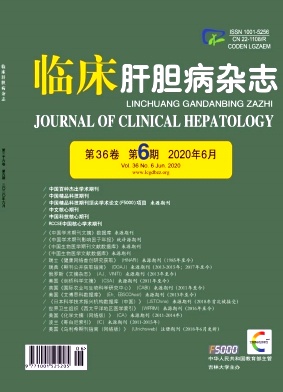|
[1] Polaris Observatory HCV Collaborators. Global prevalence and genotype distribution of hepatitis C virus infection in 2015:A modelling study[J]. Lancet Gastroenterol Hepatol,2017,2(3):161-176.
|
|
[2] GONZALEZ HC,DUARTE-ROJO A. Virologic cure of hepatitis C:Impact on hepatic fibrosis and patient outcomes[J].Curr Gastroenterol Rep,2016,18(7):32.
|
|
[3] PERZ JF,ARMSTRONG GL,FARRINGTON LA,et al. The contributions of hepatitis B virus and hepatitis C virus infections to cirrhosis and primary liver cancer worldwide[J]. J Hepatol,2006,45(4):529-538.
|
|
[4] D'AMBROSIO R,DELLA CORTE C,COLOMBO M. Hepatocellular carcinoma in patients with a sustained response to antihepatitis C therapy[J]. Int J Mol Sci,2015,16(8):19698-19712.
|
|
[5] ARIMA Y,KAWABE N,HASHIMOTO S,et al. Reduction of liver stiffness by interferon treatment in the patients with chronic hepatitis C[J]. Hepatol Res,2010,40(4):383-392.
|
|
[6] WEI L,CHENG J,LUO Y,et al. Efficacy and safety of paritaprevir/ritonavir/ombitasvir combined with dasabuvir in noncirrhotic Asian adult patients with newly diagnosed and treated chronic HCV genotype 1b infection:A randomized,doubleblind,placebo-controlled study-China data[J]. Chin J Hepatol,2018,26(5):359-364.(in Chinese)魏来,成军,罗燕,等.在初治和经治丙型肝炎病毒基因1b型慢性感染的非肝硬化亚洲成年患者中评价奥比帕利联合达塞布韦治疗的有效性和安全性:随机、双盲、安慰剂对照研究[J].中华肝脏病杂志,2018,26(5):359-364.
|
|
[7] Chinese Society of Hepatology and Chinese Society of Infectious Diseases,Chinese Medical Association. The guideline of prevention and treatment for hepatitis C:A 2015 update[J]. J Clin Hepatol,2015,31(12):1961-1979.(in Chinese)中华医学会肝病学分会,中华医学会感染病学分会.丙型肝炎防治指南(2015年更新版)[J].临床肝胆病杂志,2015,31(12):1961-1979.
|
|
[8] European Association for the Study of the Liver. EASL recommendations on treatment of hepatitis C 2018[J]. J Hepatol,2018,69(2):461-511.
|
|
[9] European Association for Study of Liver,Asociacion Latinoamericana para el Estudio del Higado. EASL-ALEH Clinical Practice Guidelines:Non-invasive tests for evaluation of liver disease severity and prognosis[J]. J Hepatol,2015,63(1):237-264.
|
|
[10] DUAN Z,JIA JD,HOU J,et al. Current challenges and the management of chronic hepatitis C in mainland China[J]. J Clin Gastroenterol,2014,48(8):679-686.
|
|
[11] AASLD-IDSA HCV Guidance Panel. Hepatitis C guidance2018 update:AASLD-IDSA recommendations for testing,managing,and treating hepatitis C virus infection[J]. Clin Infect Dis,2018,67(10):1477-1492.
|
|
[12] CHAN A,PATEL K,NAGGIE S. Genotype 3 infection:The last stand of hepatitis C virus[J]. Drugs,2017,77(2):131-144.
|
|
[13] AMPUERO J,REDDY KR,ROMERO-GOMEZ M. Hepatitis C virus genotype 3:Meta-analysis on sustained virologic response rates with currently available treatment options[J].World J Gastroenterol,2016,22(22):5285-5292.
|
|
[14] FOSTER GR,AFDHAL N,ROBERTS SK,et al. Sofosbuvir and Velpatasvir for HCV genotype 2 and 3 infection[J]. N Engl J Med,2015,373(27):2608-2617.
|
|
[15] SEZAKI H,SUZUKI F,HOSAKA T,et al. Initial-and retreatment effectiveness of glecaprevir and pibrentasvir for Japanese patients with chronic hepatitis C virus-genotype 1/2/3infections[J]. J Gastroenterol,2019,54(10):916-927.
|
|
[16] RYDER SD,IRVING WL,JONES DA,et al. Progression of hepatic fibrosis in patients with hepatitis C:A prospective repeat liver biopsy study[J]. Gut,2004,53(3):451-455.
|
|
[17] HOEFS JC,SHIFFMAN ML,GOODMAN ZD,et al. Rate of progression of hepatic fibrosis in patients with chronic hepatitis C:Results from the HALT-C Trial[J]. Gastroenterology,2011,141(3):900-908.
|
|
[18] NAKAGOMI R,TATEISHI R,MASUZAKI R,et al. Liver stiffness measurements in chronic hepatitis C:Treatment evaluation and risk assessment[J]. J Gastroenterol Hepatol,2019,34(5):921-928.
|
|
[19] CASTERA L. Noninvasive methods to assess liver disease in patients with hepatitis B or C[J]. Gastroenterology,2012,142(6):1293-1302.
|
|
[20] KIM WR,BERG T,ASSELAH T,et al. Evaluation of APRI and FIB-4 scoring systems for non-invasive assessment of hepatic fibrosis in chronic hepatitis B patients[J]. J Hepatol,2016,64(4):773-780.
|
|
[21] CHOU R,WASSON N. Blood tests to diagnose fibrosis or cirrhosis in patients with chronic hepatitis C virus infection:A systematic review[J]. Ann Intern Med,2013,158(11):807-820.
|
|
[22] JIN CT,GUO LW,LIANG WF. Research progress on non-invasive serum markers for liver fibrosis assessment in patients with chronic hepatitis B[J/CD]. Chin J Exp Clin Infect Dis(Electronic Edition),2018,12(1):11-14.(in Chinese)金彩婷,郭利伟,梁伟峰.慢性乙型病毒性肝炎肝纤维化无创性血清诊断指标研究进展[J/CD].中华实验和临床感染病杂志(电子版),2018,12(1):11-14.
|
|
[23] Review Panel for Liver Stiffness Measurementt. Recommendations for the clinical application of transient elastography in liver fibrosis assessment[J]. Chin J Hepatol,2013,21(6):420-424.(in Chinese)肝脏硬度评估小组.瞬时弹性成像技术诊断肝纤维化专家意见[J].中华肝脏病杂志,2013,21(6):420-424.
|
|
[24] BACHOFNER JA,VALLI PV,KRGER A,et al. Direct antiviral agent treatment of chronic hepatitis C results in rapid regression of transient elastography and fibrosis markers fibrosis-4score and aspartate aminotransferase-platelet ratio index[J]. Liver Int,2017,37(3):369-376.
|
|
[25] TAG-ADEEN M,SABRA AM,AKAZAWA Y,et al. Impact of hepatitis C virus genotype-4 eradication following direct acting antivirals on liver stiffness measurement[J]. Hepat Med,2017,9:45-53.
|
|
[26] MORISHIMA C,SHIFFMAN ML,DIENSTAG JL,et al. Reduction in hepatic inflammation is associated with less fibrosis progression and fewer clinical outcomes in advanced hepatitis C[J]. Am J Gastroenterol,2012,107(9):1388-1398.
|
|
[27] CHU CY,CHENG CH,CHEN HL,et al. Long-term histological change in chronic hepatitis C patients who had received peginterferon plus ribavirin therapy with sustained virological response[J]. J Formos Med Assoc,2019,118(7):1129-1137.
|







 DownLoad:
DownLoad: